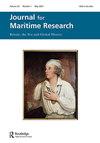海洋叙事:对海洋的文化反应,1600年至今
Q3 Arts and Humanities
引用次数: 0
摘要
在引言中引用了米歇尔·福柯和詹姆斯·c·斯科特的作品,在这里和那里,马尔科姆森仍然非常接近经验主义的基础。许多读者可能会觉得这是一种解脱。然而,其他人会希望他用更锐利的分析工具来剖析他的材料,希望他在检验他所谓的秩序的性质和运作的理论假设时能更自我批评一点。例如,不清楚是基于什么理由,也不清楚是为了什么分析目的,他选择了自上而下的视角,将官员的行为归类为创造秩序,即使他们对社会秩序造成了严重破坏,而底层的自我活动,即使是明显的建立关系,如性行为或叛乱,也被认为是混乱的。当然,这里有一个逻辑和理论框架在起作用,但马尔科姆森并没有公开地参与其中。同样,尽管他小心翼翼地强调,这本书的三个部分不应该被解读为一个因果序列——秩序、无序和惩罚——但他并没有解释如何才能有效地理解它们复杂的辩证舞蹈。这是一个错失的机会。当谈到他的发现的史学意义时,马尔科姆森同样保持沉默,其中有很多。事实上,尽管这本书的标题具有明显的误导性,但他小心翼翼地没有宣称他的论点在19世纪10年代早期到中期的北美和西印度站之外还有效力。与此同时,由于没有仔细分析他的发现与特定地理和时间背景的关系,他也没有努力避免提出相反的观点。因此,尚不清楚他的工作是否真的挑战了以前的研究,或者只是通过使整体情况复杂化来丰富他们的论点。也许我们应该心存感激:毫无疑问,更多关于朗姆酒、鸡奸和鞭笞的故事将接踵而至。本文章由计算机程序翻译,如有差异,请以英文原文为准。
Sea narratives: cultural responses to the sea, 1600–present
referencing the work of Michel Foucault and James C. Scott in the introduction, and here and there throughout, Malcomson remains mostly very close to the empirical ground. Many readers will likely find that a relief. Others, however, will wish he had dissected his material with a sharper analytical tool, and that he had been a little more self-critical in examining his theoretical assumptions regarding the nature and operation of what he calls order. For example, it is not clear on what grounds, or to what analytical ends, he chooses to privilege the top-down perspective by categorising officers’ actions, even when they wreak havoc on the social order, as order-creating, while lower-deck self-activity, even when it is overtly relationship-building like sex or mutiny, is deemed to be disordering. There is of course a logical and theoretical framework at work here, but Malcomson does not overtly engage with it. In a similar vein, while he is careful to emphasise that the three parts of the book should not be read as a causal sequence – order, disorder, and then punishment – he does not explain how their complex dialectical dance might fruitfully be understood instead. This is a missed opportunity. Malcomson is similarly reticent when it comes to the historiographical implications of his findings, of which there are many. Indeed, despite the book’s frankly misleading title, he is careful not to claim that his arguments have validity beyond the North American and West India stations in the early to mid-1810s. At the same time, by not closely analysing his discoveries in relationship to that particular geographic and chronological context, he also does not try very hard to avoid suggesting the opposite. As a result, it remains unclear whether his work really challenges previous studies, or simply enriches their arguments by complicating the overall picture. And perhaps we should be grateful: more stories of rum, sodomy and the lash will no doubt be forthcoming.
求助全文
通过发布文献求助,成功后即可免费获取论文全文。
去求助
来源期刊

Journal for Maritime Research
Arts and Humanities-History
自引率
0.00%
发文量
0
期刊介绍:
The Journal for Maritime Research ( JMR ), established by the National Maritime Museum in 1999, focuses on historical enquiry at the intersections of maritime, British and global history. It champions a wide spectrum of innovative research on the maritime past. While the Journal has a particular focus on the British experience, it positions this within broad oceanic and international contexts, encouraging comparative perspectives and interdisciplinary approaches. The journal publishes research essays and reviews around 15-20 new books each year across a broad spectrum of maritime history. All research articles published in this journal undergo rigorous peer review, involving initial editor screening and independent assessment, normally by two anonymous referees.
 求助内容:
求助内容: 应助结果提醒方式:
应助结果提醒方式:


